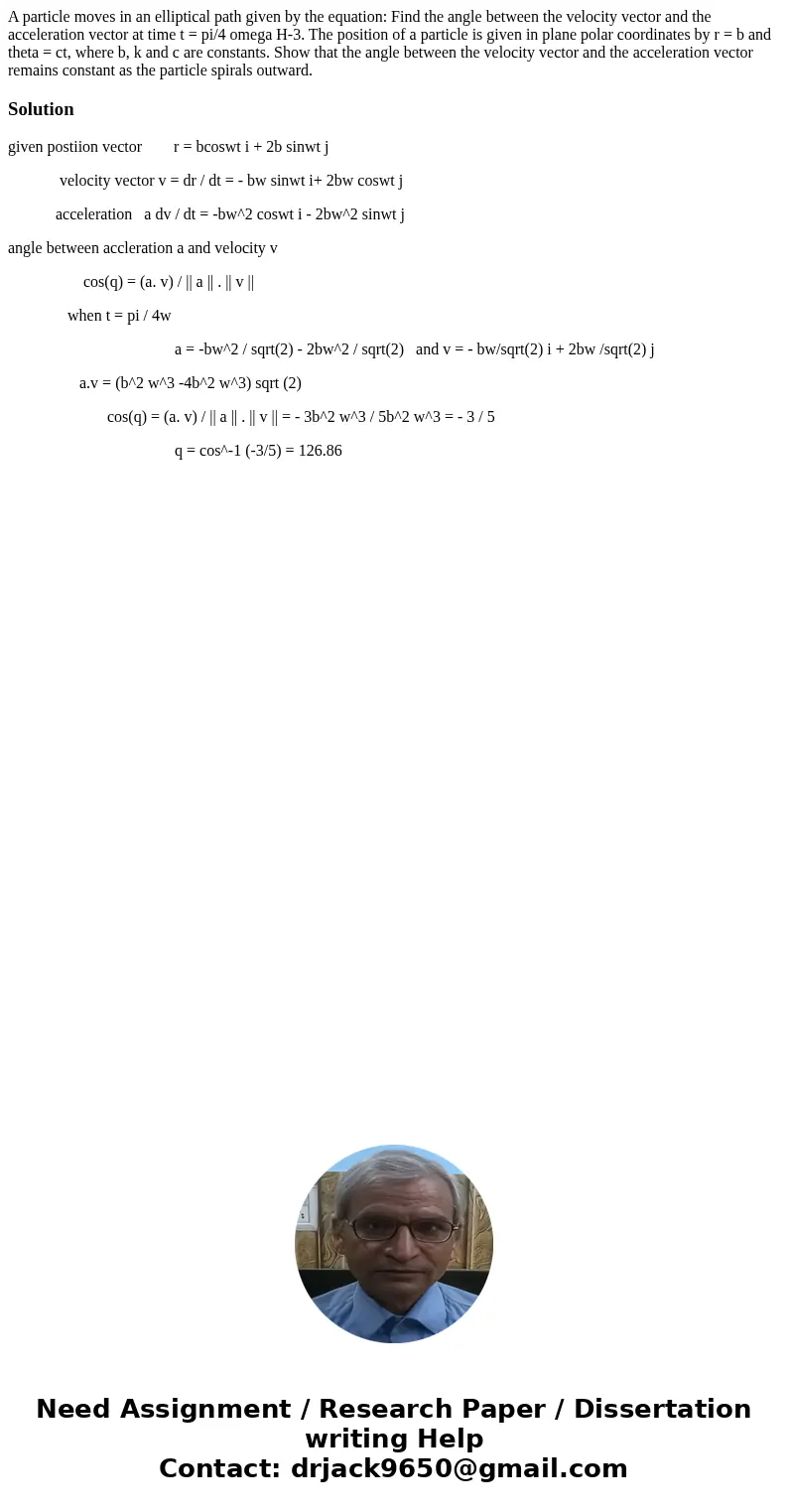A particle moves in an elliptical path given by the equation
A particle moves in an elliptical path given by the equation: Find the angle between the velocity vector and the acceleration vector at time t = pi/4 omega H-3. The position of a particle is given in plane polar coordinates by r = b and theta = ct, where b, k and c are constants. Show that the angle between the velocity vector and the acceleration vector remains constant as the particle spirals outward.
Solution
given postiion vector r = bcoswt i + 2b sinwt j
velocity vector v = dr / dt = - bw sinwt i+ 2bw coswt j
acceleration a dv / dt = -bw^2 coswt i - 2bw^2 sinwt j
angle between accleration a and velocity v
cos(q) = (a. v) / || a || . || v ||
when t = pi / 4w
a = -bw^2 / sqrt(2) - 2bw^2 / sqrt(2) and v = - bw/sqrt(2) i + 2bw /sqrt(2) j
a.v = (b^2 w^3 -4b^2 w^3) sqrt (2)
cos(q) = (a. v) / || a || . || v || = - 3b^2 w^3 / 5b^2 w^3 = - 3 / 5
q = cos^-1 (-3/5) = 126.86

 Homework Sourse
Homework Sourse